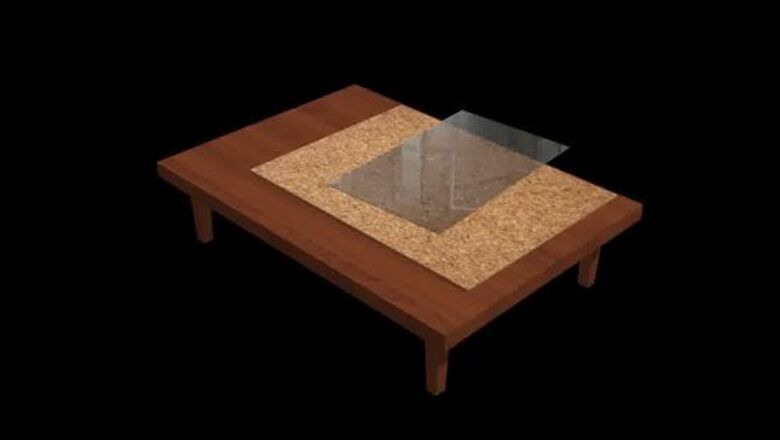
views
Preparation

Set up your work area. You'll need a large flat surface, preferably one that is slightly soft and won't scratch your glass. Work in an area that is easy to clean. Avoid working over carpet because of the risk of getting glass shards on the floor if the glass breaks. For their own safety keep pets and children away from your workspace and materials.
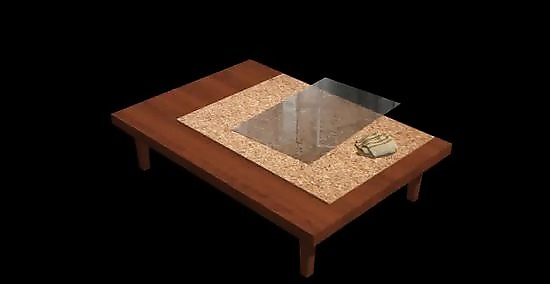
Clean the glass surface in the area where you plan to make cuts. Any grime or silica on the glass can ruin your score. Wipe these away by running a cloth or your finger along the surface of the glass where you plan to score.
Obtain a glass cutter and some light oil. Glass cutters are about the size of a pencil and use a diamond or a hardened wheel to mark a score into glass so that it can be broken cleanly along a line. You can buy cutting oil at a stained glass store or use a small amount of kerosene. EXPERT TIP Bicycle Glass Bicycle Glass Glassblowing Experts Bicycle Glass Co. was founded in 2016 by David Royce and Michael Boyd, two professional glass experts. Bicycle Glass is primarily a lighting company, committed to quality, sustainability, and affordability. All Bicycle Glass products are made of high-quality, recycled glass and are hand-blown by a dedicated team of artisans. The studio is committed to reducing its carbon footprint by conserving energy in all of its production. Using renewable wind energy to offset all electricity usage, the studio is actively working toward the goal of carbon neutrality. Bicycle Glass believes that high-quality, handmade glass products should be within reach for everyone. Bicycle Glass Bicycle Glass Glassblowing Experts Using a glass cutter is the easiest way to cut glass. Commercially available glass cutters are great tools for DIY crafts. They score the glass, making clean breaks along the line. For perfect circles, use a circular glass cutter that scores a circle, making it easier to tap away the unwanted pieces.
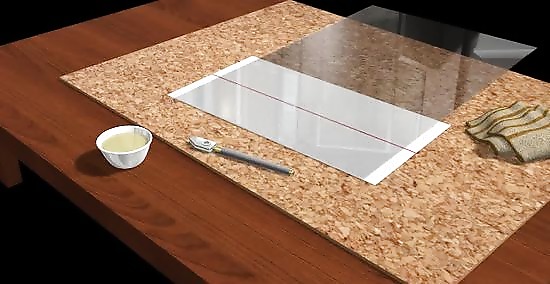
Measure and mark where you want to score. The score must run from one edge of the glass to the other edge. You can write on the glass with a marker (preferably with a straight edge, if you are cutting a straight line. You can also mark on paper and place the glass on top of the paper. Cut should not be very long. Scores longer than two feet have a high failure rate when breaking. Make sure your marks leave about six inches of glass on each side to grip and break. If you cut smaller pieces, you may need to use special tools, like pliers or a light hammer, to break off glass you can't get a hold of.
Scoring the Glass

Dip the cutter in the oil and grasp it like a pencil. An oiled cutter creates a smoother score line. Make sure to look at the wheel and make sure it is lined up the way you want the glass to cut.
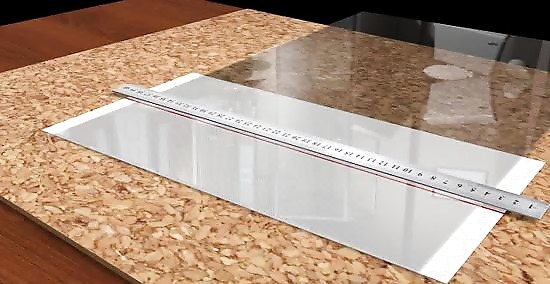
Lay out a straight edge. Use a yardstick or a normal desk ruler. You need something that has a thick enough profile that it won't conflict with the wheel on the cutter.
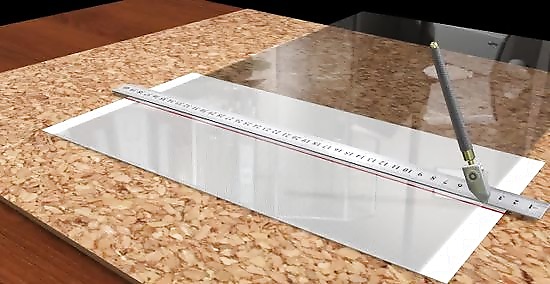
Apply pressure to the glass and you pull the cutter along the surface, rolling on the small carbide wheel. Listen for a smooth sound like ripping silk. A gritty sound means that you are pushing too hard or that you did not oil your cutter. The less sound you make, the better your score will be. If you push too hard (a very common mistake), your cut gets "hot," meaning that it snaps and pops. You are aiming to get a uniform score. If you are pressing too hard in one spot and perfectly in another, the glass will not break the way that you want it to. Microscopic imperfections in your score will cause your cut to go askew.

Run the cutter smoothly from one edge to the other. Do not run back and forth over the line if you miss a spot.
Check your score. You want a score that is not popping and is barely visible, if you were to wipe the oil away. It should look like a small scratch, nothing more. Make sure it runs completely from one edge to the other. Videos made replacing windowpanes totally doable. "When my old window frames didn't fit new glass panes, I thought I'd never be able to DIY it. But these step-by-step clips gave me the know-how to measure, score, and cut the glass perfectly. Now, those antique windows are as good as new!" - Tory H. First timer put at ease by safety reminders. "As a total beginner, I was freaked out trying to cut glass for the first time. But the clear pointers on technique plus blunt safety tips built up my confidence. Now I feel ready to rock this homemade project thanks to the super thorough guidance." - Dawn V. A broken-down primer demystified everything. "With zero glass-cutting experience, this step-by-step walkthrough was invaluable. The graphics illustrating scoring angles, breaking techniques, and curve cutting were clutch for visuals. Now I get this intricate craft well enough to give it a shot!" - David S. Inspired by a pro's flawless technique. "Watching a professional neatly measure, score, and cut a custom mirror pane was mesmerizing. Recalling that motivates me to carefully follow all the tips here to mimic that precision. This will help me copy that adept approach!" - Fiona M. Exactly what I needed for a household project. "Needing to resize a small pane for a clock face, the direct instructions and diagrams were perfect. Now I know how to cut glass cleanly instead of living with jagged edges. This practical advice made my home craft possible." - Kevin K. We want to hear from you! Advice from our readers makes our articles better. If you have a story you’d like to share, tell us here.
Breaking and Smoothing
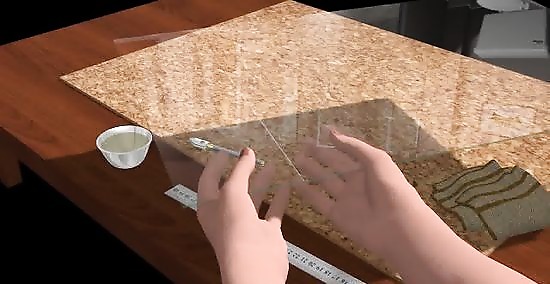
Grasp each side of the cut carefully in your hands. Hold the glass as if you were trying to break a potato chip in half with two hands.
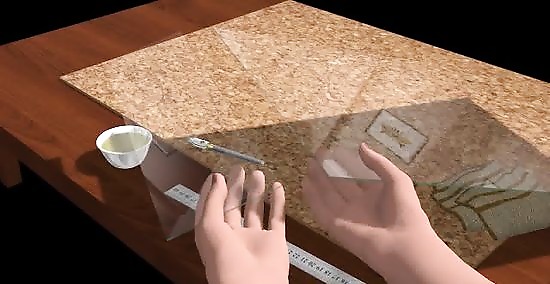
Apply minor pressure from the wrist to break the glass along your score. Your elbows do not move. Simply twist your wrists (your right wrist will turn clockwise and your left will turn counterclockwise). Imagine that the score you made is half the depth of the glass and now you need to "open it up" by using the score as a weak spot. You're done as soon as you have two pieces of glass instead of the one you started with. When the glass breaks, it may simply start as a "run." If it only runs an inch or so, apply a little more twisting pressure and it will continue to run.
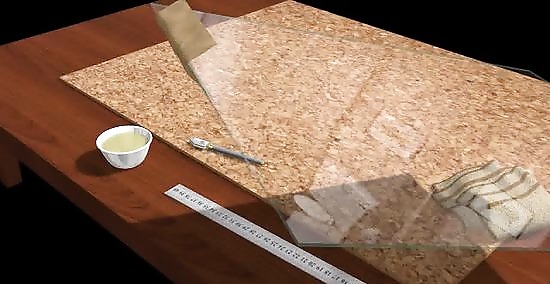
Use fine sandpaper or a sharpening stone to remove the sharp edge. This edge will be where the vertical edge meets the horizontal surfaces. Not only does sanding reduce the chances of your being cut, but sanded glass is less likely to chip along the edges and has some added strength.
Cutting on a Curve
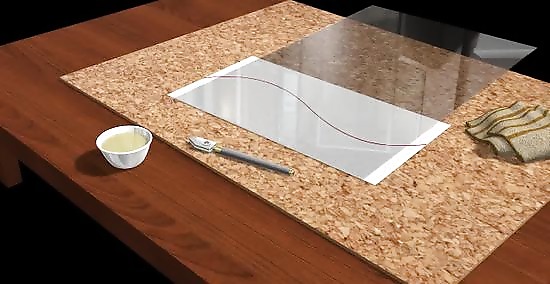
Follow a pattern that connects to the edge. If you are cutting a freehand shape, make sure you are breaking along lines that run from edge to edge. Mark your lines with a marker or set your glass over your pattern.
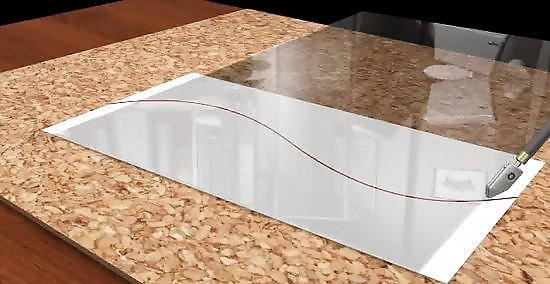
Use several straight lines to cut a sharp curve. You should be able to score along gentle curves normally with a steady hand. For tighter curves, make a series of marks that run along part of the curve and skew off at a tangent outside the piece you want.

Flip the glass over and gently press on the center of your score from the backside. You will start a run this way. Follow the run with light pressure and you can watch the glass separate where you scored it. If your score is too close to the edge of a piece of glass, it may run to the edge instead of along your score because that is the easiest path for the run to take.
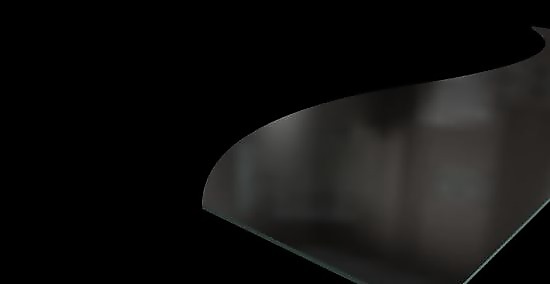
Make some relief cuts to remove small pieces at a time instead of all at once. The smaller the relief cuts, the more accurate your cut will be. Grip smaller pieces with pliers to snap them off.
Smooth your curved edges using a glass router. This machine uses a spinning wheel with fine diamond chips as a grinder. Turn on the router and press your curve firmly against the grinder to smooth out your curve, then sand as normal. EXPERT TIP Bicycle Glass Bicycle Glass Glassblowing Experts Bicycle Glass Co. was founded in 2016 by David Royce and Michael Boyd, two professional glass experts. Bicycle Glass is primarily a lighting company, committed to quality, sustainability, and affordability. All Bicycle Glass products are made of high-quality, recycled glass and are hand-blown by a dedicated team of artisans. The studio is committed to reducing its carbon footprint by conserving energy in all of its production. Using renewable wind energy to offset all electricity usage, the studio is actively working toward the goal of carbon neutrality. Bicycle Glass believes that high-quality, handmade glass products should be within reach for everyone. Bicycle Glass Bicycle Glass Glassblowing Experts Always prioritize safety when working with glass. Make sure to wear proper protective gear and carefully handle the glass. This applies to all processes, including holding, cutting, or polishing. Follow safety protocols to prevent accidents and achieve successful outcomes.













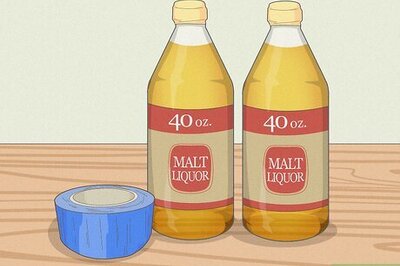


Comments
0 comment